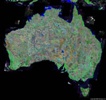 The New Zealand Institute, the politically neutral think tank born of the “Knowledge Wave†conference, has been making waves of a different kind today with its new, and rather idiosyncratic take on how NZ should approach emissions reductions. The report, part of a series on climate change, is called “We’re Right Behind You†[PDF], and advocates a “fast follower†approach to emissions reductions – which apparently means reneging on our Kyoto commitments. The report recommends that:
The New Zealand Institute, the politically neutral think tank born of the “Knowledge Wave†conference, has been making waves of a different kind today with its new, and rather idiosyncratic take on how NZ should approach emissions reductions. The report, part of a series on climate change, is called “We’re Right Behind You†[PDF], and advocates a “fast follower†approach to emissions reductions – which apparently means reneging on our Kyoto commitments. The report recommends that:
…it seems appropriate and realistic for New Zealand to undertake to reduce its net emissions to their 1990 levels by 2020 rather than by 2012. We recommend that New Zealand should seek to avoid the obligation to purchase carbon credits associated with the decision to delay achieving its Kyoto committment by 2012.
This effectively means withdrawing from Kyoto, and as you might expect this “considered analysis†has been welcomed by the big emitters. I was interviewed by one of the authors of the report back in June, before HT was published, and in a swift email exchange this morning I promised to read the report thoroughly before rushing to any judgement (unlike some). So, my timely (but not rushed) view of this contribution to the policy debate?


